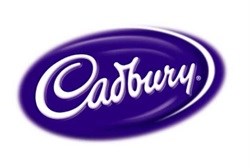Colour trademarks and Cadbury's case

According to the court, the description of Cadbury's trademark in its trademark application was not precise enough for members of the public and competitors of Cadbury to interpret the scope of protection claimed by Cadbury.
In its application for registration, Cadbury showed its purple coloured trademark as a rectangular purple block and described it as: "The colour purple (Pantone 2685C), as shown on the form of application, applied to the whole visible surface, or being the predominant colour applied to the whole visible surface, of the packaging of the goods."
According to the court, the above description will open the door to Cadbury obtaining a monopoly over a number of different visual forms of the colour purple used on its packaging as opposed to a single purple colour used in a specific manner.
The judgment is of interest for brand owners with rights in South Africa. In 2004, a differently worded trademark application by Cadbury to register the colour purple in relation to its chocolates was rejected by the Trade Marks Tribunal. Cadbury's South African application was in that instance initially represented by two rectangles showing the colour purple and the trademark application was later on amended to indicate the specific pantone for which Cadbury sought protection. The South African application was found to be unregistrable on the basis that the colour purple, with its specific pantone, was applied for "in the abstract" and it was not shown how the colour would be used in relation to the packaging of Cadbury's goods.
Criteria for defining a colour mark
In both the UK Appeal Court's recent decision and the decision in South Africa, a point of reference by the presiding officers was the European Court of Justice's criteria for defining a colour mark in Libertel Groep BV v Benelux-Merkenbureau 2004 FSR 465. In Libertel, it was held that a colour may validly constitute the subject of a trademark application provided that it is represented graphically in a way that is clear, precise, self-contained, easily accessible, intelligible, durable and objective.
A problem that courts are facing with the criteria in Libertel is that those criteria are relatively subjective and theoretical and the facts of each case are decisive when those criteria are applied. For example, on the facts of Libertel it was held that a pantone description of the colour orange sufficiently described the trademark that the telecommunications services provider "Orange" sought to protect in relation to those services.
Perhaps a distinction between the the Libertel case and the Cadbury cases in South Africa and the UK is that the Libertel case involved the application of a colour to telecommunication services. Services, by their nature, cannot be seen or touched, as opposed to goods such as chocolates which are sold in packaging. When it comes to colour marks and goods, both the South African and UK Cadbury cases highlight a challenge for brand owners. On the one hand, defining a colour trademark without any reference to how the mark is to be applied or used in relation to the goods or their packaging could risk a court finding that the mark is imprecisely described. On the other hand, attempting to rectify the challenge that Cadbury had in South Africa by indicating the various ways in which a colour could be applied to goods could result in a court finding that the trademark application covers a number of different visual forms of the packaging and is therefore imprecise, as has now happened in the UK.
Cadbury considering an appeal
An implication of the Cadbury cases for brand owners is that, although theoretically possible, current interpretations of the law by the courts make it extremely difficult for brand owners to protect colour trademarks in relation to goods per se other than as part of the specific "get-up" of a particular product or promotional article. This surely could not have been the intention of the legislatures when they included "colour" as permissible signs or marks that can be registered separately as trademarks so as to give effect to their obligations in terms of international treaties to make provision for the registration of colours as trademarks.
It is reported that Cadbury is considering an appeal of the latest decision and it will be in the interest of brand owners to keep abreast with any developments. Unfortunately, in both the South African and UK cases, it was not for the presiding officers to decide what form of Cadbury's application would have been acceptable as doing so would have been beyond the scope of their duties.
From a practical perspective, for now, South African brand owners who wish to protect colours as a trademark ought to consider their filing strategies carefully. Perhaps with the current uncertainty it is worthwhile for brand owners to file more than one trademark application in a number of forms to cover various possibilities in the event of an objection - at least until there are clearer guidelines from the Courts.





































